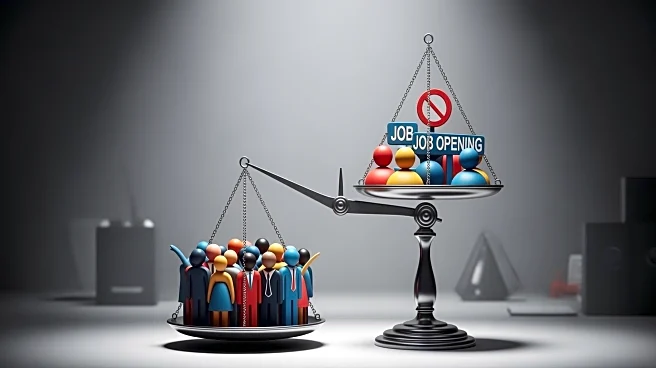What's Happening?
For the first time since April 2021, the number of unemployed Americans has surpassed the number of available job openings, according to the latest data from the Bureau of Labor Statistics. The Job Openings
and Labor Turnover Survey (JOLTS) report revealed that the ratio of job vacancies to unemployed workers fell to 0.99 in July, down from 1.0 in June. This indicates a shift in the labor market dynamics, where job openings totaled 7.18 million, falling short of the 7.38 million expected by economists. Despite the decline in job openings, layoffs remain low, suggesting that the issue lies more with the availability of new jobs rather than job security for those currently employed.
Why It's Important?
This development is significant as it reflects a cooling labor market, which could influence Federal Reserve policy decisions. The decrease in job openings has led to increased speculation about potential interest rate cuts by the Federal Reserve, with traders now pricing in a higher likelihood of a rate cut. Economists, however, caution that this data does not necessarily indicate an impending recession. The labor market's cooling is seen as a gradual adjustment rather than a sharp downturn, which could stabilize inflationary pressures without triggering a recession. The situation also highlights challenges for unemployed individuals reentering the workforce, as labor force participation has weakened.
What's Next?
The upcoming August jobs report, scheduled for release soon, will be crucial in determining the Federal Reserve's next steps regarding interest rates. A strong jobs report could justify maintaining current rates, while weaker data might increase the likelihood of a rate cut. Additionally, the labor market's trajectory will be closely monitored to assess whether the current cooling trend continues or if new factors emerge that could alter the economic outlook.











